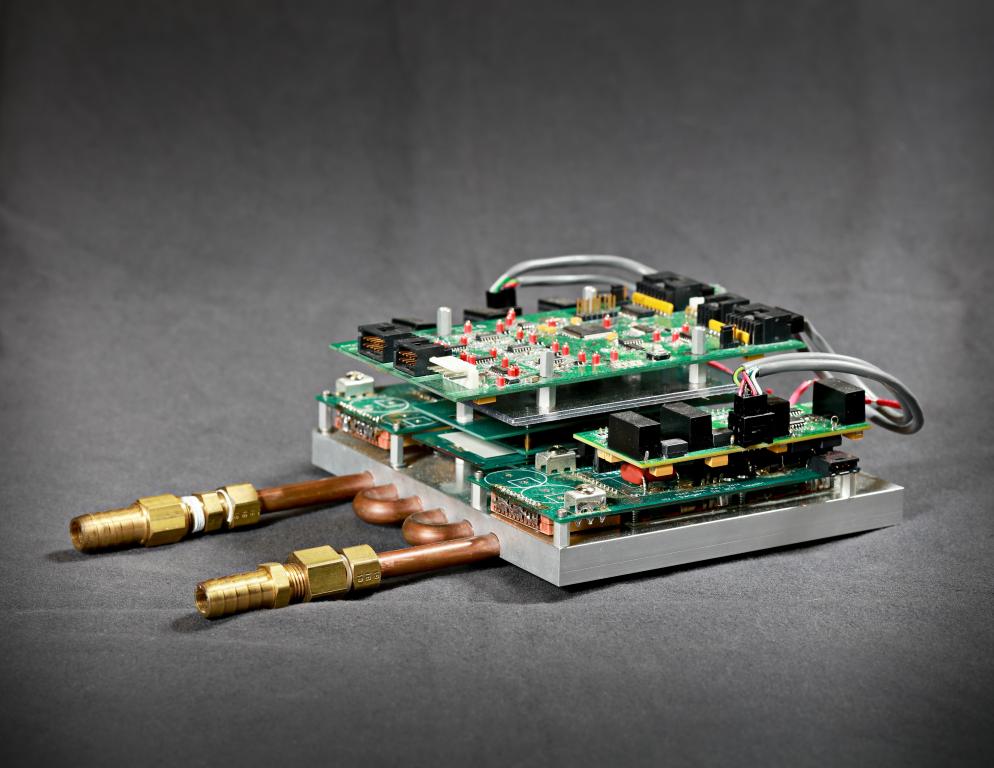
Directing energy flows and syncing a home’s electricity generation sources like solar power with the utility grid would get a lot easier with a single, easy-to-use platform that is the aim of a recent research and development agreement between Oak Ridge National Laboratory and Woodland Hills, California’s Flex Power Control.
Under the agreement, researchers at ORNL will develop power conversion hardware for Flex Power’s home energy router, dubbed the Smart Power Integrated Node, or SPIN.
SPIN would combine into a single unit all the functions of an inverter for solar power and backup battery storage, as well as working as an electric vehicle fast charger, a power quality corrector, and energy meter—resulting in an adaptive controlled distributive energy resource.
While homes and businesses are typically wired for AC current, solar panels produce high-voltage DC power, and batteries and many appliances use DC current—requiring that power be converted and stepped-down to appropriate voltages for appliances as needed. If every energy resource in a modern, self-sustaining home needs its own power conversion system, the result is redundancy, higher cost, and less efficient coordination and energy conversion efficiency.
The home energy router would replace those individual inverters and controls and connect homes to the utility grid with a single interface. It would allow “plug and play” of new renewable energy sources, passive and active loads, and their power conversion modules. With further development by Flex Power, for instance, the router could sense your usage and compare it against a utility’s rate structure, automatically finding the best times to either keep electricity at your home or to sell it profitably into the grid.
The hardware to be created for Flex Power is based on the ENABLE (Environmentally Neutral Automated Building Electric Energy) platform developed by ORNL’s Power Electronics and Electric Machinery (PEEM) group within the Electrical and Electronics Systems Research Division. The platform uses advanced wide-bandgap semiconductors that can operate at much higher voltages, as well as 3D-printed heat sinks that dissipate the heat generated by the device. The result will be a much smaller, more efficient router.
“The original idea was, we have Internet routers at home, why not have something that routes energy?” said principal investigator and PEEM Group Leader Burak Ozpineci. The ENABLE platform could essentially replace much of the function of electrical panels in homes, he added, with the potential to even be controlled using an app on your phone.
“We are seeing more introduction of DC power into the home, mainly because of solar panels and electric vehicles and even backup battery energy storage,” said Flex Power Control President Greg Smith. “It all needs to be converted and routed seamlessly.”
Smith said he is excited to draw upon the power electronics capabilities at the lab, and that the home energy router concept has already drawn the attention of California regulators who are interested in a demonstration. “The depth of expertise at ORNL is unmatched,” he said.
The project will last for up to two years and is partially funded through the Technology Commercialization Fund administered by the Department of Energy’s Office of Technology Transitions.
ORNL is managed by UT-Battelle for the Department of Energy's Office of Science, the single largest supporter of basic research in the physical sciences in the United States. DOE’s Office of Science is working to address some of the most pressing challenges of our time. For more information, please visit http://energy.gov.science.


